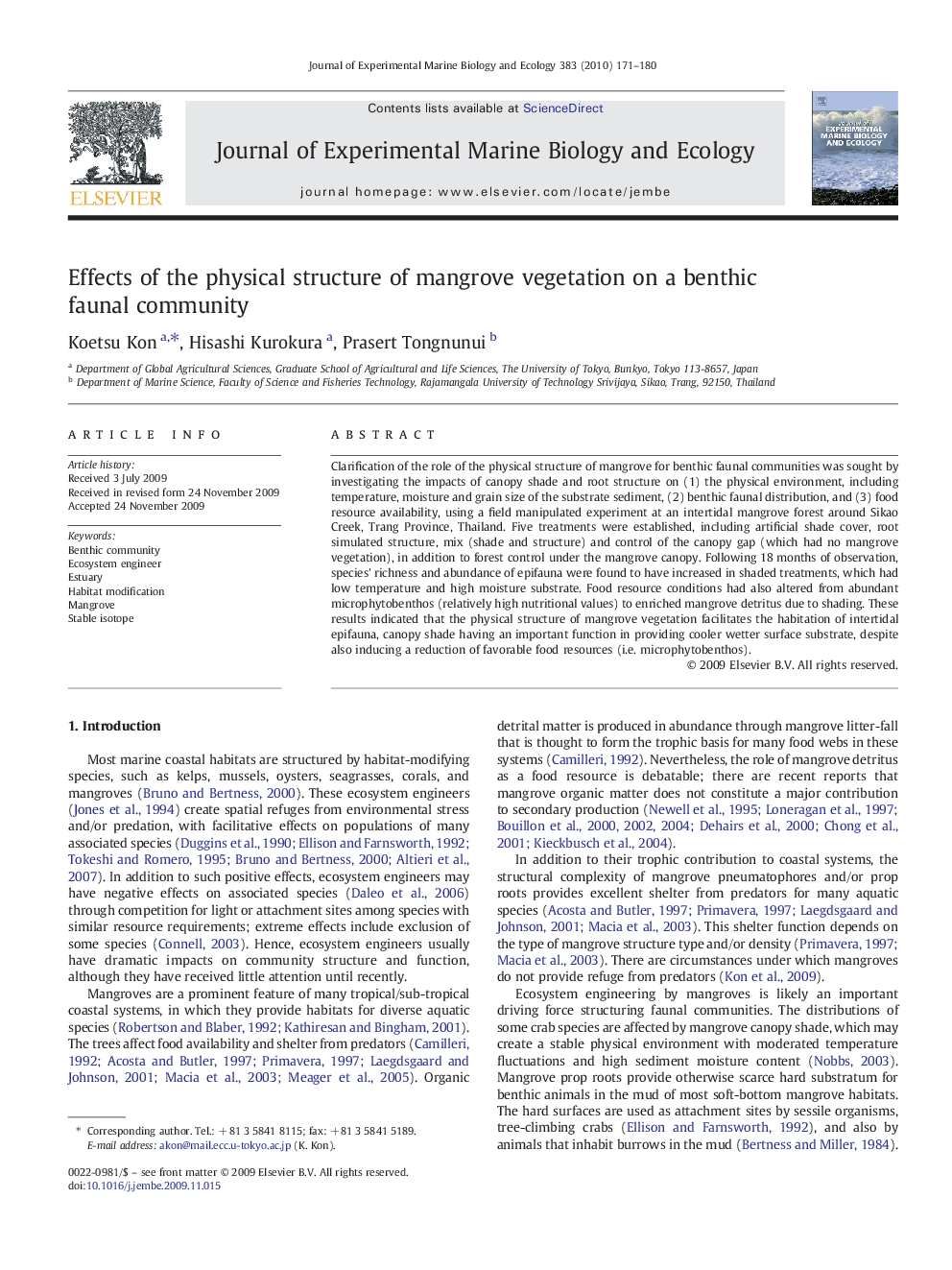| Article ID | Journal | Published Year | Pages | File Type |
|---|---|---|---|---|
| 4396782 | Journal of Experimental Marine Biology and Ecology | 2010 | 10 Pages |
Clarification of the role of the physical structure of mangrove for benthic faunal communities was sought by investigating the impacts of canopy shade and root structure on (1) the physical environment, including temperature, moisture and grain size of the substrate sediment, (2) benthic faunal distribution, and (3) food resource availability, using a field manipulated experiment at an intertidal mangrove forest around Sikao Creek, Trang Province, Thailand. Five treatments were established, including artificial shade cover, root simulated structure, mix (shade and structure) and control of the canopy gap (which had no mangrove vegetation), in addition to forest control under the mangrove canopy. Following 18 months of observation, species' richness and abundance of epifauna were found to have increased in shaded treatments, which had low temperature and high moisture substrate. Food resource conditions had also altered from abundant microphytobenthos (relatively high nutritional values) to enriched mangrove detritus due to shading. These results indicated that the physical structure of mangrove vegetation facilitates the habitation of intertidal epifauna, canopy shade having an important function in providing cooler wetter surface substrate, despite also inducing a reduction of favorable food resources (i.e. microphytobenthos).
